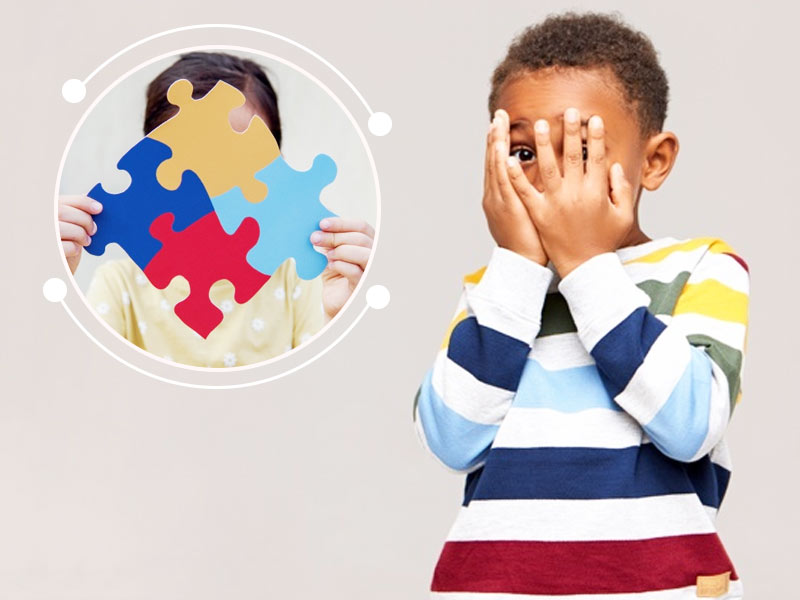
A child's development follows a definite trajectory, within permissible limits of deviations, to reach to its maximum potential. The road to growth and development should be monitored regularly and periodically to find the deviation as early as possible and to find the solution to the cause. Neurological disorders don’t develop suddenly but there is a gradual development. The child may exhibit certain warning signs that can help parents analyse the underlying neurological issue. In this article we have included a of warning signs of neurological disorder in children explained by Dr. Puja Kapoor, Paediatric Neurologist & Co-founder of Continua kids.
Table of Content:-
Whenever the child visits the paediatric clinic for vaccination or general ailment like cough, cold, fever, loose stools etc. the child is assessed for the following:
Head circumference
The head growth is directly proportional to the growth of the brain. Monthly head circumference measurement is required in the infancy period as that is the time for maximum growth of the brain. The head size approximately increases by 12 cm in the first year.
Weight gain
As the child grows in the neonatal period (first month) there is a weight gain of 30 to 40 gms per day, which later reduces as the child grows. A year-old child is approximately 10 kg, which doubles as the child reaches 6 years of age.

Also Read: Identify These Symptoms Of Autism In A Growing Kid
Height/ length gain
A newborn is approximately 50 cm at birth. The height of a child at 2.6 years when doubled is the approximate adult height.
Looking at all the above parameters it can be concluded that early years of life are the years where maximum brain and body growth happens. Any significant deviation could happen due to nutritional, genetic, metabolic, infectious disease, which could lead to neurological disorder or could be caused by neurological disorder.
The child may have small head growth, height, weight due to the above-mentioned causes. If these causes are timely treated the trajectory of growth and development could be altered. The red flags that a child has neurological disorder could be picked up early by following the milestones of the child. Significant deviation in the milestones is an indicator of an underlying neurological disorder. Other manifestations like abnormal body movement, also called as seizures, indicate the abnormal electrical activity of the brain. These, if left untreated, can cause permanent damage to the brain.

Also Read: Concentration Problem in Your Child? It Could Be A Sign Of Neurological Disorder
There are different types of seizures, but one specific kind, called as infantile spasm, needs special mention as they are missed as “Chamki”, in infant period. These occur in infancy (less than 1 year of age), in clusters, especially after awakening or going to sleep. As they appear like small jerks which resemble “darna” or “chaukna”, they are easily missed by their parents.
Timely intervention to stop them can prevent permanent damage to the brain.

Milestones
A child development is measured under 4 domains
- Motor milestones: It includes motor functions like head holding, crawling, sitting, walking etc. Any motor delay could be because of neurological causes also. The child may be too loose or too tight to handle which is termed as tone abnormalities. These require urgent referral to a specialist.
- Fine motor milestones: It includes activities like picking fine, small things. Holding a pencil, scribbling, eating with a spoon etc. Are few examples of fine motor activities. A child could have distal muscle weakness if he is unable to do these activities at a specified age.
- Social and adaptive: A child is able to communicate through nonverbal ways like waving bye bye, pointing towards an object, playing with an object etc. Any delay in these could be a sign of neurological/ developmental disorder/ disease.
- Speech and language milestones: Verbal speech is also a surrogate marker of intelligence. The content and context of speech, and development of language has to be examined as they could also indicate towards neurological illness/ disorder.
Parents should be watchful towards the initial signs and symptoms of neurological disorders in kids. This can help in worsening of the symptoms and providing right treatment at the right time.
Read More Articles in Children’s Health
All images credits- freepik
Also watch this video
How we keep this article up to date:
We work with experts and keep a close eye on the latest in health and wellness. Whenever there is a new research or helpful information, we update our articles with accurate and useful advice.
Current Version